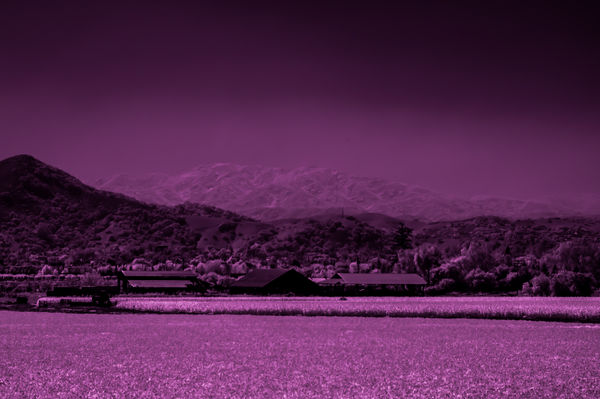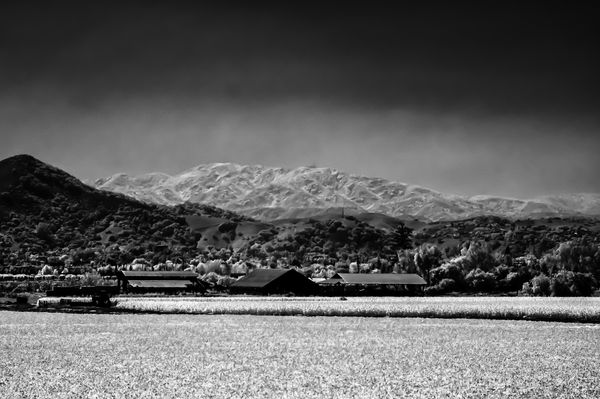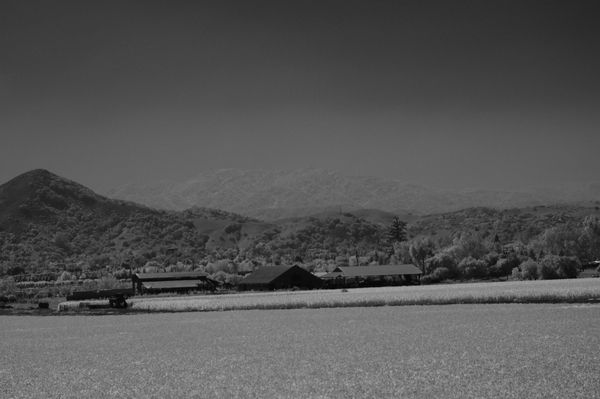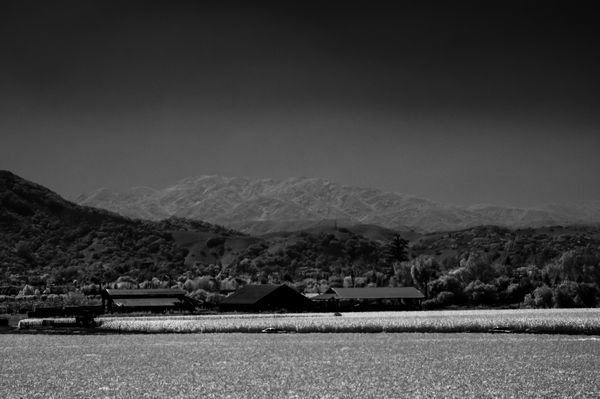Check out Software and Computer Support for Photographers section of our forum.
Using an IR shot to cut through haze
Nov 24, 2014 10:44:34 #
It was a very hazy day and I wanted to try using an IR shot to cut through the haze. Started out in Lightroom, followed by NIK Silver Efex Pro2 to turn it into B&W. I was pleased with the results.
The original was shot in RAW. Both pictures converted to JPG for downloading.
The camera was a Sony A55 that has been converted to Full Spectrum. The lens was an older Minolta 28-85mm. I have better results with the Minolta glass over the kit 18-55mm lens that came with the camera which tends to leave a hot spot in the center.
Picture shot at F7.1 and 1/1250 sec at FL of 85mm
The original was shot in RAW. Both pictures converted to JPG for downloading.
The camera was a Sony A55 that has been converted to Full Spectrum. The lens was an older Minolta 28-85mm. I have better results with the Minolta glass over the kit 18-55mm lens that came with the camera which tends to leave a hot spot in the center.
Picture shot at F7.1 and 1/1250 sec at FL of 85mm
Original shot using 720nm filter

(Download)
Converted to B&W with Silver Efex Pro2

(Download)
Original JPG out of the camera - RAW +JPG were saved by camera

Nov 24, 2014 10:58:03 #
Nearly the same results could have been achieved by shooting through a red filter.
Nov 24, 2014 11:18:50 #
Perhaps not. A regular camera would have the benefit of the red light with its ability to cut through haze. But the IR is yet a longer wave length and cuts through the haze even better. A red filter is about 590nm and would be less than this shot.
Same view, but 650nm filter - not nearly as much cutting through the haze

Check out Drone Video and Photography Forum section of our forum.
Nov 24, 2014 11:45:16 #
I don't know... looks nearly identical to the "Original shot using 720nm filter" image (minus the purple-magenta color tone, of course).
Nov 24, 2014 22:11:05 #
JimH123 wrote:
It was a very hazy day and I wanted to try using a... (show quote)
i had a 720nm, got rid of it and got a 590nm little more pop in pictures my camera nex c3
Nov 24, 2014 22:42:34 #
I became very familiar with IR film and haze cutting issues when I was in the army doing aerial reconnaissance work. A red filter such as #24A will darken skies dramatically but has nothing near the haze cutting ability of IR film, IR Ektachrome Aeriographic Material (a special film) or a digital camera especially converted for IR work.
Aesthetically speaking, a red filter will not render foliage as white in black and white or other interesting colors when the camera is in the IR color mode.
With Kodak gone, I don't know if any other manufacturer is making an E-6 aeriographic film- it was great stuff for detecting bunkers and doing some crazy abstract work.
Ed
Aesthetically speaking, a red filter will not render foliage as white in black and white or other interesting colors when the camera is in the IR color mode.
With Kodak gone, I don't know if any other manufacturer is making an E-6 aeriographic film- it was great stuff for detecting bunkers and doing some crazy abstract work.
Ed
Nov 24, 2014 22:50:40 #
Hi Ed,
I wonder if the military now uses digital since the results are immediate and it appears that it can accomplish much the same things. And I suspect that the military has access to some camera technology the rest of us can only dream about such as extending the range of IR to even longer wave lengths. I have a 830nm (or something close to that) filter and the camera continues to work fine. But I think that its not going to be sensitive much beyond 1000nm. And the longer the wave length, the more it penetrates haze.
Thanks for the comment.
I wonder if the military now uses digital since the results are immediate and it appears that it can accomplish much the same things. And I suspect that the military has access to some camera technology the rest of us can only dream about such as extending the range of IR to even longer wave lengths. I have a 830nm (or something close to that) filter and the camera continues to work fine. But I think that its not going to be sensitive much beyond 1000nm. And the longer the wave length, the more it penetrates haze.
Thanks for the comment.
Nov 24, 2014 23:54:35 #
Hi Jim! Thanks for the come back.
My experience goes back to the Viet Nam era- a long time ago. We used K- series cameras hanging out of gun ships and specialized under the wing cameras on more sophisticated aircraft. Nowadays all of that stuff is museum pieces- antiques. So am I! Some years back I went down to a reunion of my old unit. My goodness- my specialist (5th) class ranks no longer exists and I found out that my old job (MOS) is extinct! I mean allot of this stuff is classified but I got the scuttlebutt that me and my group have been replaced by satellite technology a long time ago. God forbid the next world war can be fought from computer driven control centers.
Back in the day, our shots were sent to interpretation centers where they were analyzed, sent to cartographic centers and converted into logistics maps. With the color IR film we could immediately see different coloration where tunnels were located in that where the ground has been undermined it emits a different temperature or level of heat in contrast to completely solid ground, therefore, where the tunnels existed the ground was a different color.
Its the same technology that is used to detect insulation breakdowns and heat leaks in houses.
I think you are right about the military, nowadays, having some pretty crazy stuff- things out of a science fiction flick but really exist. They also know how to spend the big bucks. I hope they use all that gear to put an end to the current wave of terrorism. Peace!
Ed
My experience goes back to the Viet Nam era- a long time ago. We used K- series cameras hanging out of gun ships and specialized under the wing cameras on more sophisticated aircraft. Nowadays all of that stuff is museum pieces- antiques. So am I! Some years back I went down to a reunion of my old unit. My goodness- my specialist (5th) class ranks no longer exists and I found out that my old job (MOS) is extinct! I mean allot of this stuff is classified but I got the scuttlebutt that me and my group have been replaced by satellite technology a long time ago. God forbid the next world war can be fought from computer driven control centers.
Back in the day, our shots were sent to interpretation centers where they were analyzed, sent to cartographic centers and converted into logistics maps. With the color IR film we could immediately see different coloration where tunnels were located in that where the ground has been undermined it emits a different temperature or level of heat in contrast to completely solid ground, therefore, where the tunnels existed the ground was a different color.
Its the same technology that is used to detect insulation breakdowns and heat leaks in houses.
I think you are right about the military, nowadays, having some pretty crazy stuff- things out of a science fiction flick but really exist. They also know how to spend the big bucks. I hope they use all that gear to put an end to the current wave of terrorism. Peace!
Ed
If you want to reply, then register here. Registration is free and your account is created instantly, so you can post right away.
Check out Astronomical Photography Forum section of our forum.


